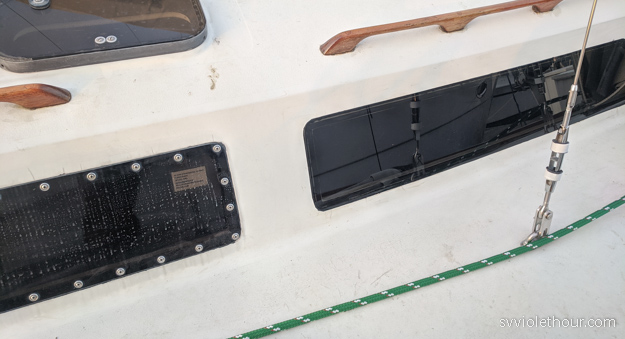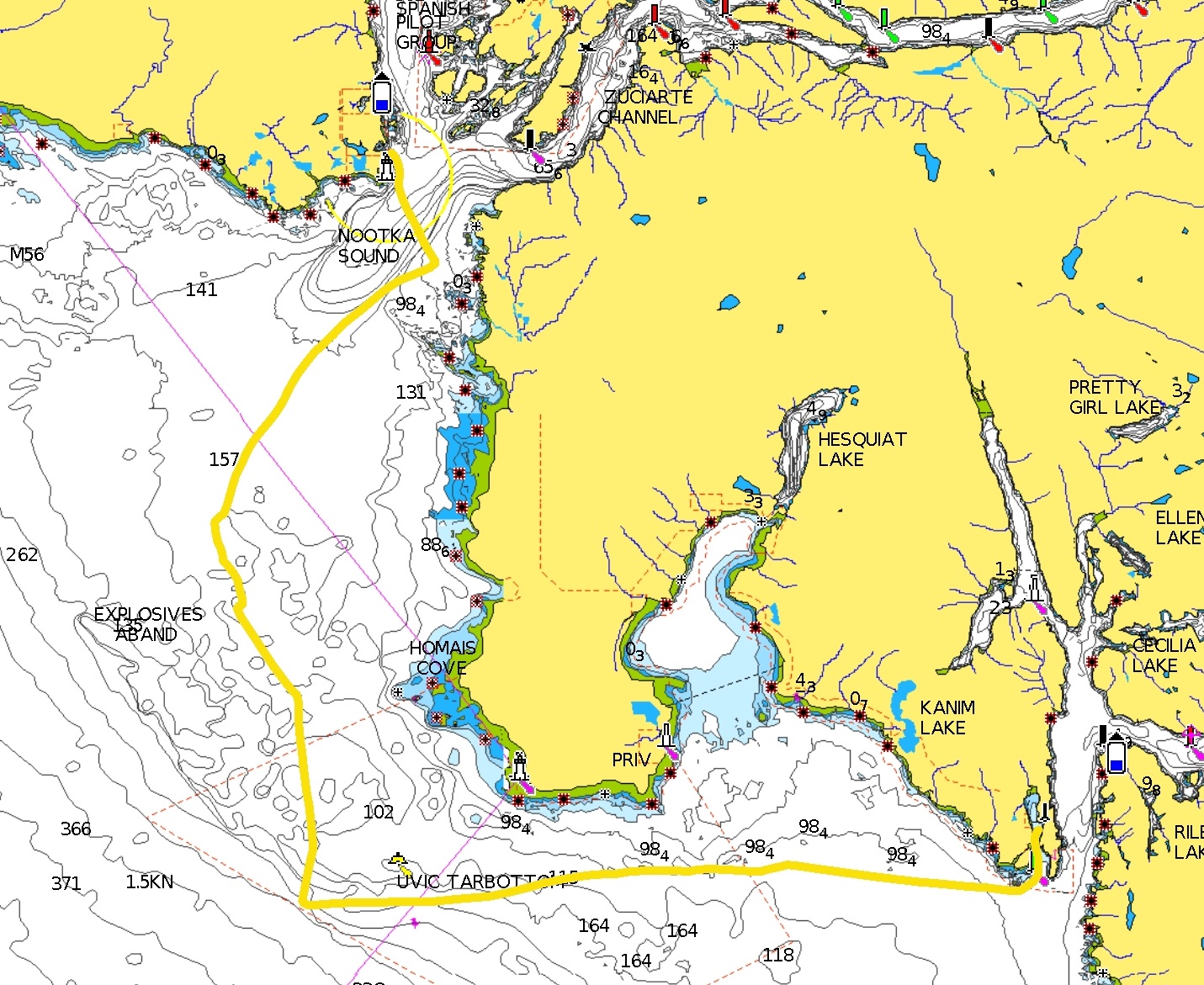We just finished our first full circumnavigation of Vancouver Island. This is a big milestone for many sailors, although for several years we shied away from it – partly due to misplaced fears, and partly because we don’t do things just to check them off a list. We’re trying to maximize the fun ratio in cruising, and we weren’t sure the west coast provides the best bang for the buck.
To sum up the whole trip would be very difficult – we spent over a month going north on the inside, and 6 weeks going down the west coast. I’m going to recap the west coast part though because that’s the portion that was the most unknown to us (and to most PNW boaters).

As they say in cruising, the highs were very high and the lows very low. Overall though we didn’t have any terribly difficult parts – our main challenge was dealing with the weather, which turned out to be highly unusual this year. It was the rainiest, chilliest, darkest, most humid July we can ever recall.
And that’s not just our perception – Seattle meteorologist Cliff Mass apparently thought so too. We had southerly wind the majority of the time, which meant our voyage was mostly upwind, not a downwind sleigh ride like everyone thinks it is. More on that later.

Route
We started out from Port Hardy, sailing/motoring up Goletas Channel to Bull Harbor. From there we crossed the Nahwitti bar and sailed around Cape Scott in excellent conditions. We spent some time in Quatsino Sound, spotting sea otters and refueling at Winter Harbor, and then sailed around the Brooks Peninsula, having one of our best sails on the headland that has the scariest reputation.
Next we spent 5-6 days in Kyoquot Sound, slowing down to explore the beautiful anchorages and also because there was no wind. We motored to Esperanza Inlet on a flat, calm ocean, and then the forecast changed to a low pressure front bringing 5 days of southeasterly wind! We wondered if there is ever northwest wind on the west coast, and where summer was.
In the second half of July, summer showed up and we sailed from Nootka Sound to Clayoquot and then Barkley Sound, spending 2 weeks in Barkley Sound. We had sunny days and easy sailing inside Barkley Sound, although the rain wasn’t completely over (we got drenched for 24 hours on August 1). A few days later we headed into the Strait of Juan de Fuca via Port Renfrew and Becher Bay, bringing the west coast portion of our voyage to an end.
Continue reading →
















